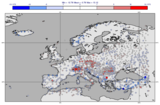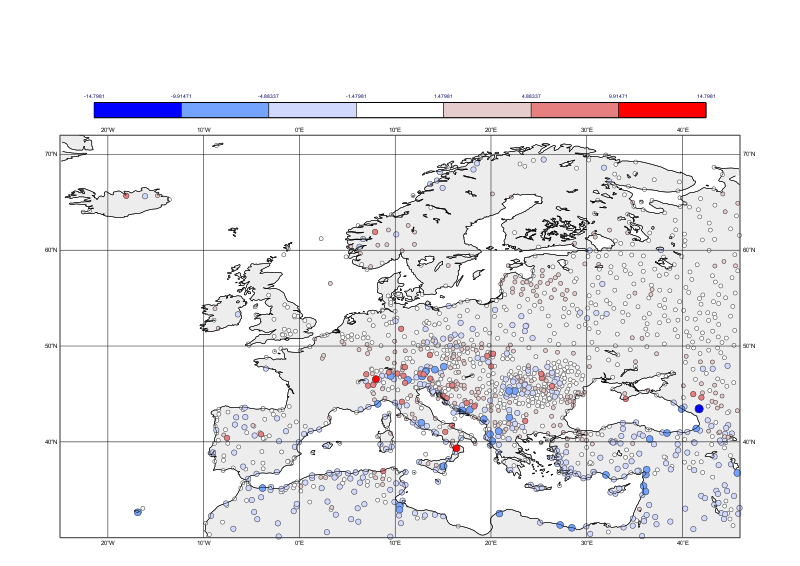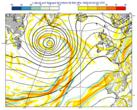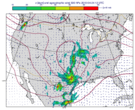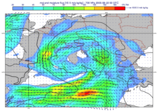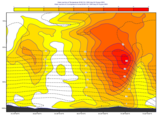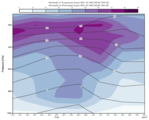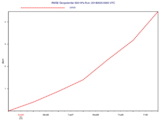Mathematical functions
- abs(data)
Returns the absolute value of
data.- Parameters
data (
Fieldset,Geopoints,NetCDF, nd-array or number) – input data- Return type
same type as
data
Missing values are retained, unaltered by the calculation.
- acos(data)
Returns the arc cosine of
datain radians.- Parameters
data (
Fieldset,Geopoints,NetCDF, nd-array or number) – input data- Return type
same type as
data
Missing values are retained, unaltered by the calculation.
- asin(data)
Returns the arc sine of
datain radians.- Parameters
data (
Fieldset,Geopoints,NetCDF, nd-array or number) – input data- Return type
same type as
data
Missing values are retained, unaltered by the calculation.
- atan(data)
Returns the arc tangent of
datain radians.- Parameters
data (
Fieldset,Geopoints,NetCDF, nd-array or number) – input data- Return type
same type as
data
Missing values are retained, unaltered by the calculation.
- atan2(data_y, data_x)
Returns the arc tangent of
data_y/data_xin radians.Missing values are retained, unaltered by the calculation.
- cos(data)
Returns the cosine of
data.- Parameters
data (
Fieldset,Geopoints,NetCDF, nd-array or number) – input data- Return type
same type as
data
Input values must be in radians. Missing values are retained, unaltered by the calculation.
- exp(data)
Returns the exponential of
data.- Parameters
data (
Fieldset,Geopoints,NetCDF, nd-array or number) – input data- Return type
same type as
data
Missing values are retained, unaltered by the calculation.
- div(data_1, data_2)
Returns the integer part of the dividing
data_1bydata_2.- Parameters
- Return type
same type as
data_1
A missing value in either
data_1ordata_2will result in a missing value in the corresponding place in the output.
- int(data)
Returns the integer part of
data.- Parameters
data (
Fieldset,Geopoints,NetCDF, nd-array or number) – input data- Return type
same type as
data
Missing values are retained, unaltered by the calculation.
- intbits(data, bit[, number_of_bits])
Takes the numbereger part of the values of
dataand extracts a specifiedbit(or bits).- Parameters
data (
Geopointsor int) – input databit (number) – the bit to extract (1 is the least significant bit!)
number_of_bits (number) – the number of bits to extract (starting at
bit)
- Return type
Geopointsor number
If only
bitis specified it will always be returned as 1 or 0, regardless of its position in the integer.With
number_of_bitsa group of bits can be extracted. The result will be treated as if the first bit was the least significant bit of the result.- Example
These examples show how intbits work on individual numbers:
import metview as mv # To extract the 1st, 2nd and 3rd bits from # an int separately: # in bit-form, this is 00000110 with the least significant # bit at the right n = 6 flag = mv.intbits (n, 1) # flag is now 0 flag = mv.intbits (n, 2) # flag is now 1 flag = mv.intbits (n, 3) # flag is now 1 # To extract the 1st and 2nd bits together # to make a single int: flag = mv.intbits (n, 1, 2) # flag is now 2 # To extract the 2nd and 3rd bits together # to make a single int: flag = mv.intbits (n, 2, 2) # flag is now 3 # To extract the 3rd and 4th bits together # to make a single int: flag = mv.intbits (n, 3, 2) # flag is now 1
The number of bits available depends on the machine architecture and Metview’s compilation options, but at the time of writing it should be 32. This function does not treat missing values differently from any other values (for efficiency with large datasets).
- log(data)
Returns the natural logarithm of
data.- Parameters
data (
Fieldset,Geopoints,NetCDF, nd-array or number) – input data- Return type
same type as
data
Missing values are retained, unaltered by the calculation.
- log10(data)
Returns the log base 10 of
data.- Parameters
data (
Fieldset,Geopoints,NetCDF, nd-array or number) – input data- Return type
same type as
data
Missing values are retained, unaltered by the calculation.
- mod(data_1, data_2)
Returns the integer remainder of dividing
data_1bydata_2.- Parameters
- Return type
same type as
data_1
Where the values of
data_2are larger than those ofdata_1, the output value is set to the integer part ofdata_1. A missing value in eitherdata_1ordata_2will result in a missing value in the corresponding place in the output. Note that only the integer parts of the inputs are considered in the calculation, meaning that a divisor of 0.5 would cause a division by zero.
- neg(data)
Returns the negative of
data.Missing values are retained, unaltered by the calculation.
Note
The following lines of codes are equivalent:
import metview as mv fs = mv.neg(fs) fs = -fs
- sgn(data)
Returns the sign of
data: -1 for negative , 1 for positive and 0 for 0 values.- Parameters
data (
Fieldset,Geopoints,NetCDF, nd-array or number) – input data- Return type
same type as
data
Missing values are retained, unaltered by the calculation.
- sin(data)
Returns the sine of
data.- Parameters
data (
Fieldset,Geopoints,NetCDF, nd-array or number) – input data- Return type
same type as
data
Input values must be in radians. Missing values are retained, unaltered by the calculation.
- sqrt(data)
Returns the square root of
data.- Parameters
data (
Fieldset,Geopoints,NetCDF, nd-array or number) – input data- Return type
same type as
data
Missing values are retained, unaltered by the calculation.
- tan(data)
Returns the tangent of
data.- Parameters
data (
Fieldset,Geopoints,NetCDF, nd-array or number) – input data- Return type
same type as
data
Input values must be in radians. Missing values are retained, unaltered by the calculation.
